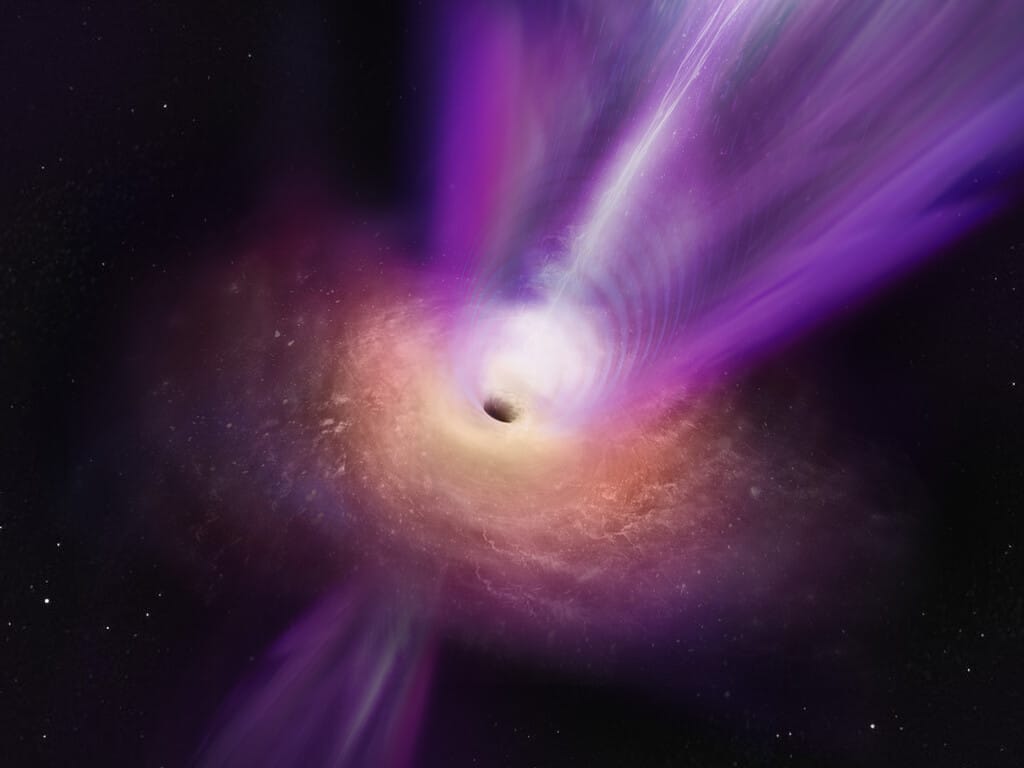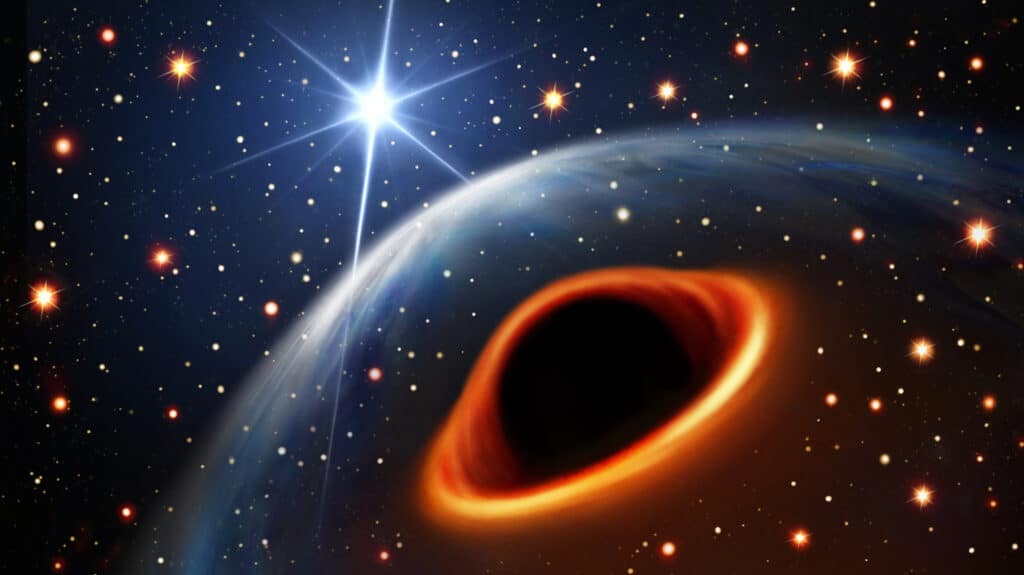An international team of astronomers have detected a mysterious object in the Milky Way. It’s heavier than the heaviest known neutron stars, but lighter than the lightest known black holes. So, what is it?
According to scientists from The University of Manchester and the Max Planck Institute for Radio Astronomy, it could be the first discovery of the radio pulsar-black hole binary. If so, the pairing could allow for new tests of Albert Einstein’s general theory of relativity and open doors to studying black holes.
Using the MeerKAT Radio Telescope, the mysterious object was found in orbit around a rapidly spinning millisecond pulsar, about 40,000 light years away in a globular cluster — a densely packed group of stars. The unique aspect of this discovery is the object’s mass, which places it in the so-called “black hole mass gap.” This gap refers to a range of mass where neither neutron stars nor black holes are typically found, according to current astrophysical theories.

“Either possibility for the nature of the companion is exciting. A pulsar–black hole system will be an important target for testing theories of gravity and a heavy neutron star will provide new insights in nuclear physics at very high densities,” says UK project lead Ben Stappers, a professor of astrophysics at The University of Manchester, in a media release.
Neutron stars are incredibly dense remnants of dead stars. When they gain too much mass, they are theorized to collapse into black holes — objects with gravity so strong that nothing, not even light, can escape. The threshold for this collapse is believed to be about 2.2 times the mass of the Sun. However, the lightest black holes observed are around five times more massive than the Sun, creating a mass gap in current understanding.
The object’s discovery in NGC 1851, a globular cluster in the Columba constellation, was facilitated by the MeerKAT telescope’s sensitivity. Globular clusters, with their tightly packed stars, are hotspots for stellar interactions and collisions, likely leading to the formation of this massive object.
The team detected faint pulses from a radio pulsar in the cluster, spinning over 170 times a second and emitting beams of radio light. Using pulsar timing, a technique that involves measuring changes in the pulsar’s pulse timing, they made precise measurements of its orbital motion.
“Think of it like being able to drop an almost perfect stopwatch into orbit around a star almost 40,000 light years away and then being able to time those orbits with microsecond precision,” explains study co-author Ewan Barr, of the Max Planck Institute for Radio Astronomy.
The object’s precise mass measurement showed it to be more massive than any known neutron star yet lighter than any known black hole, making it a unique object in the “black hole mass gap.” The nature of this object — whether it’s the most massive neutron star, the lightest black hole, or some new form of stellar remnant — remains a mystery. However, its discovery provides a valuable opportunity to study matter under extreme conditions.

“We’re not done with this system yet,” concludes study co-author Arunima Dutta, of the Max Planck Institute for Radio Astronomy. “Uncovering the true nature of the companion will a turning point in our understanding of neutron stars, black holes, and whatever else might be lurking in the black hole mass gap.”
This discovery not only challenges existing astrophysical theories but also promises to unlock new areas of research in the study of gravity, black holes, and neutron stars.
The study is published in the journal Science.












